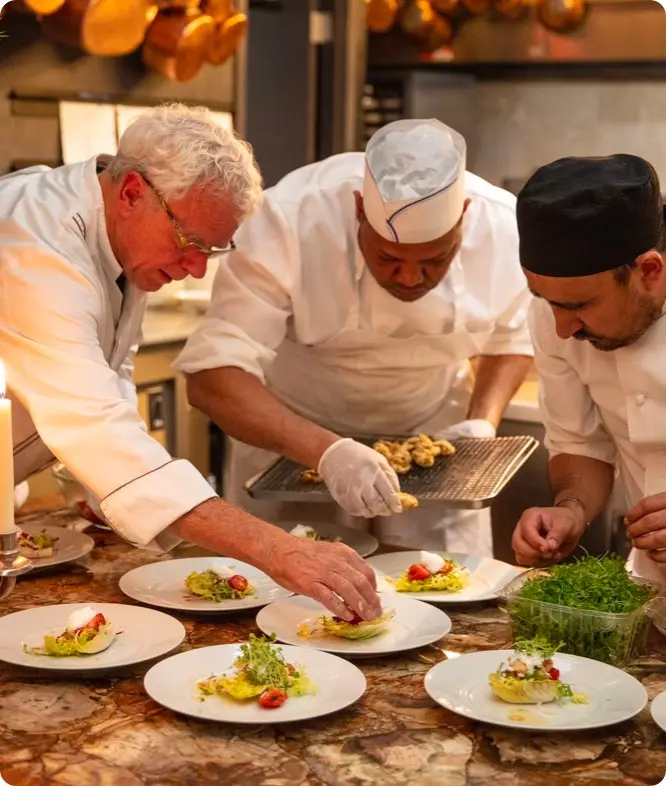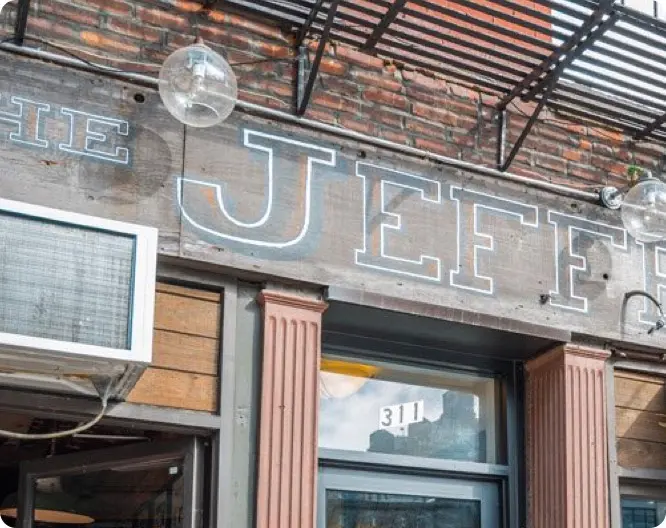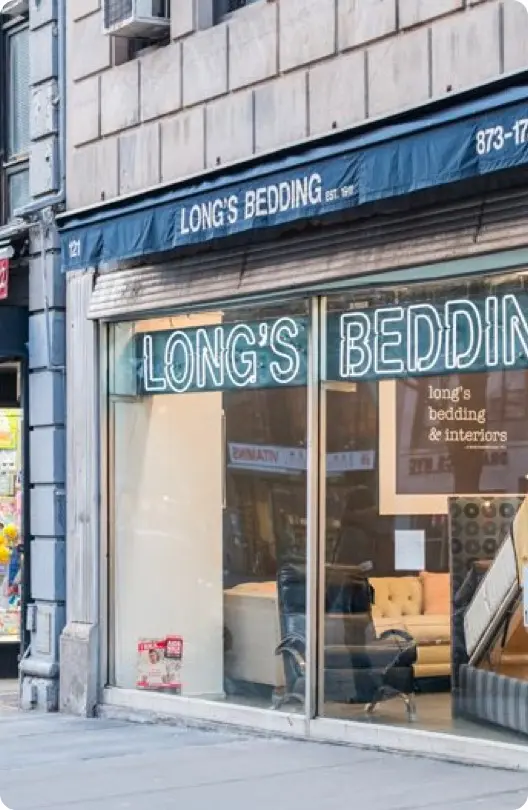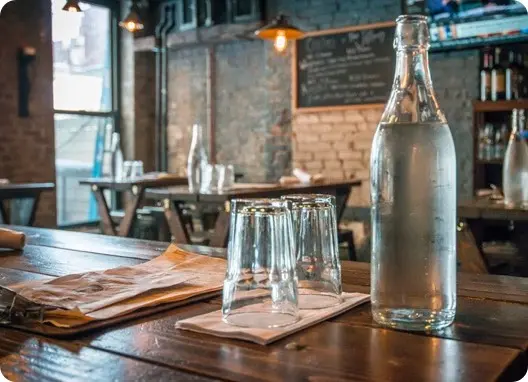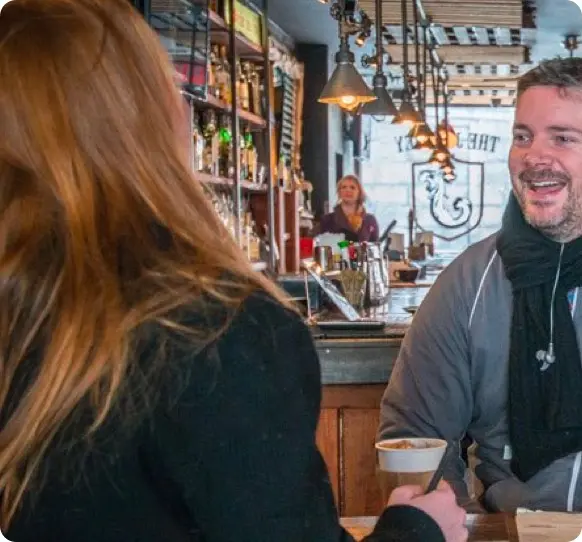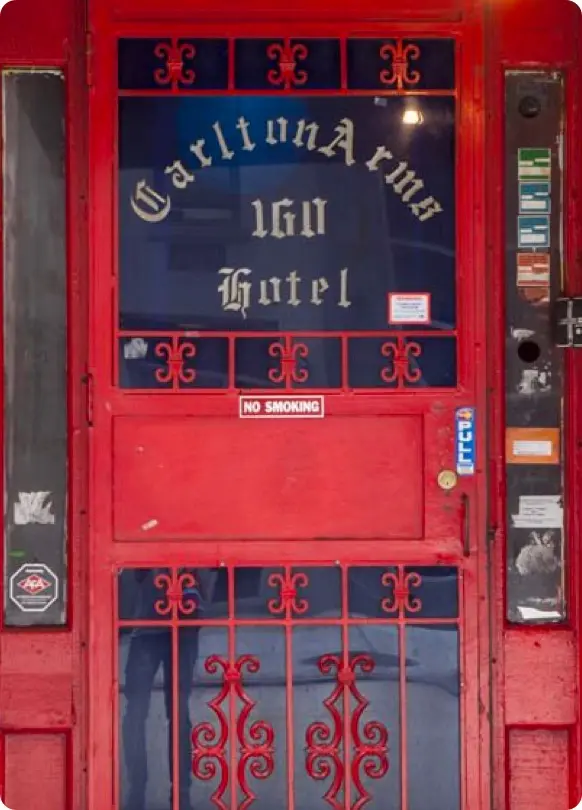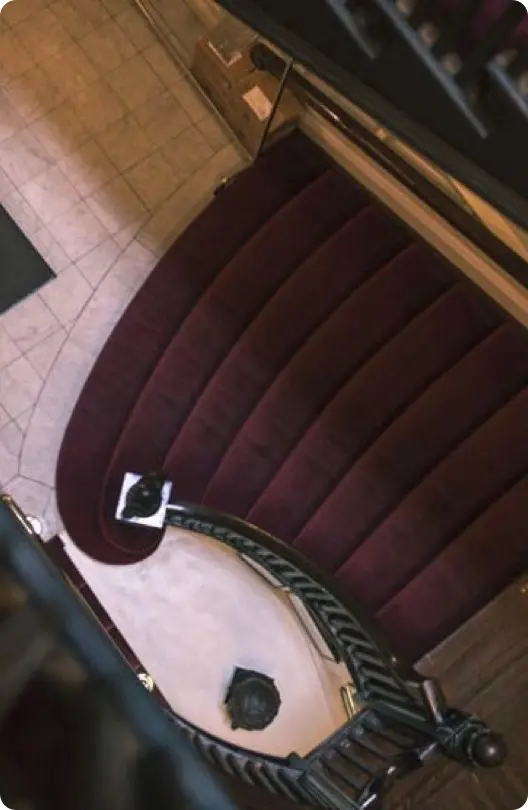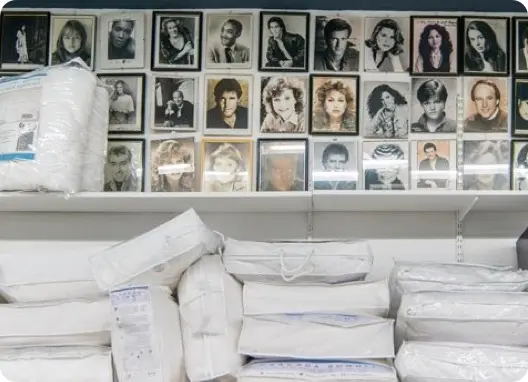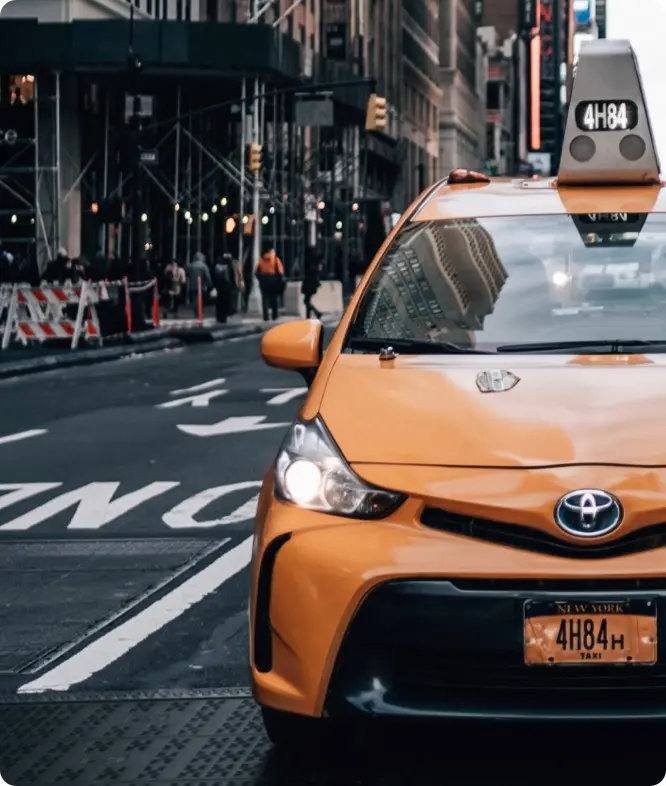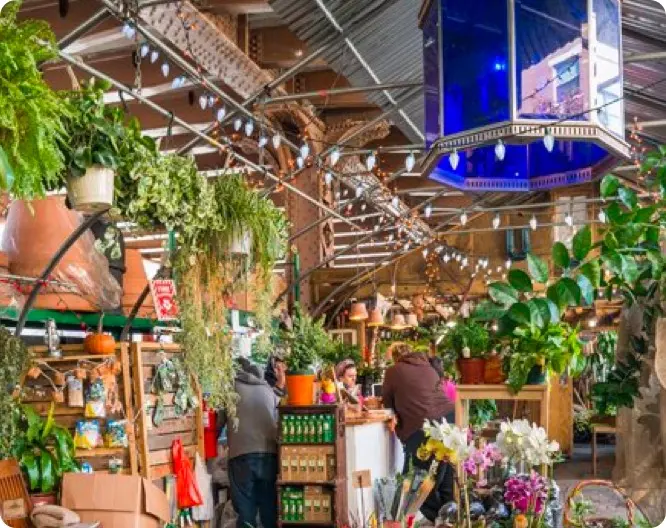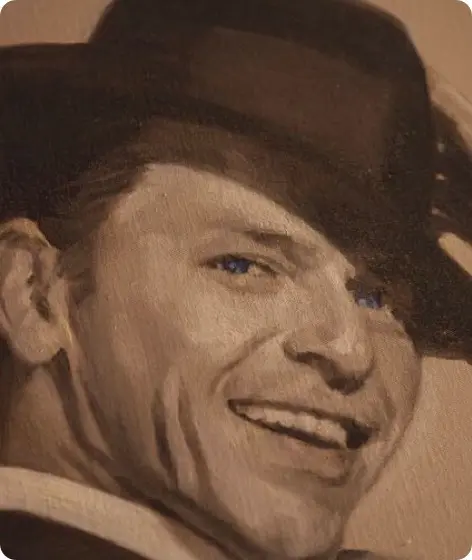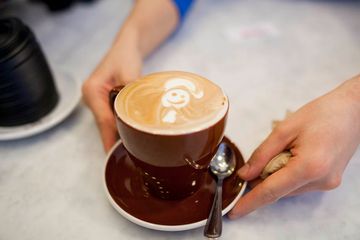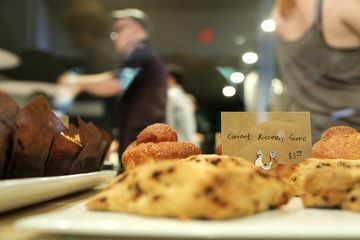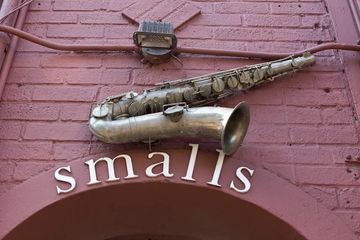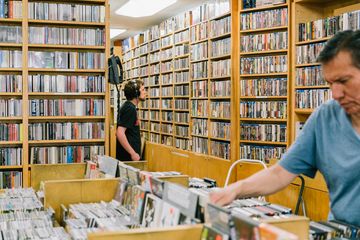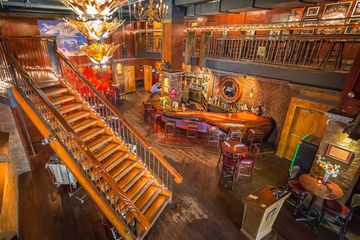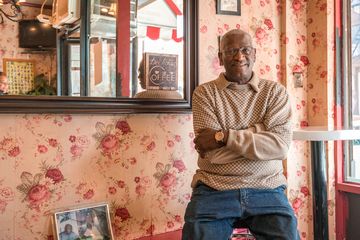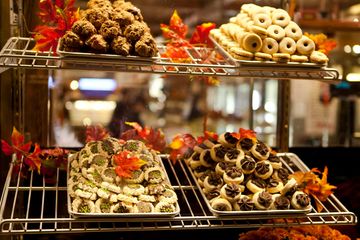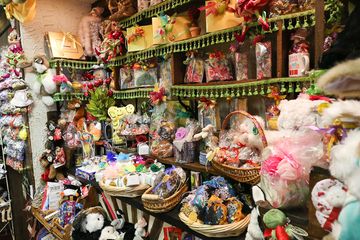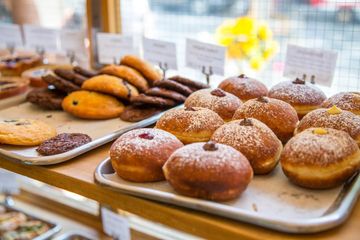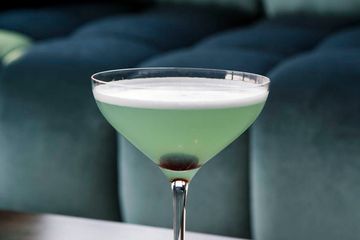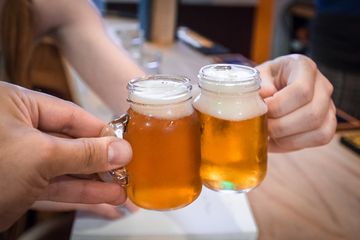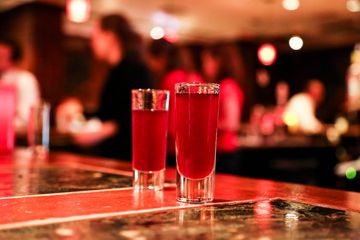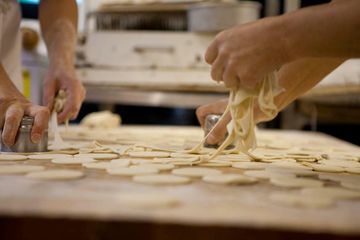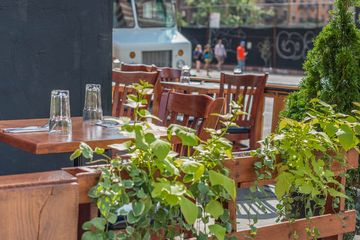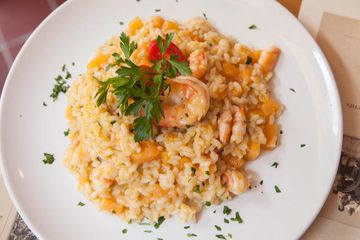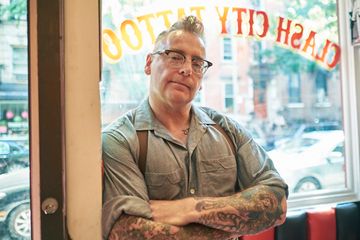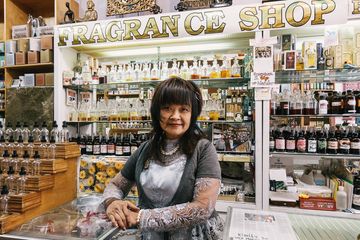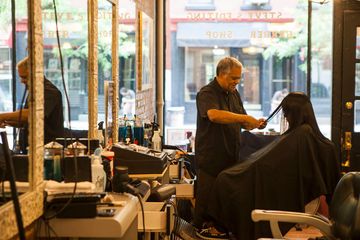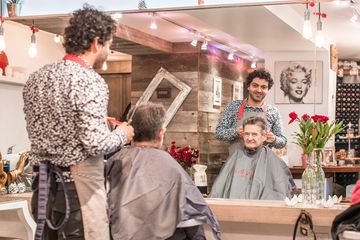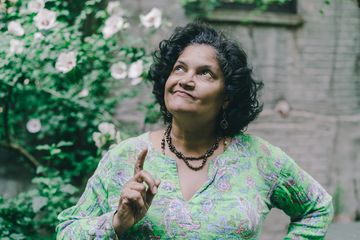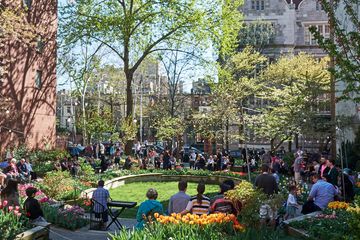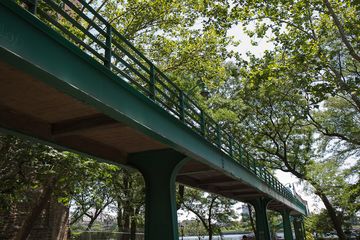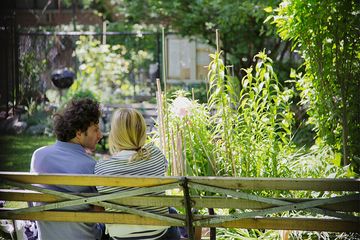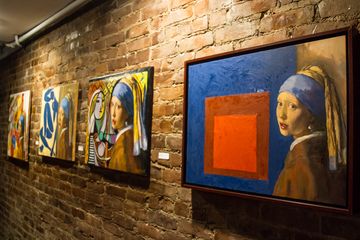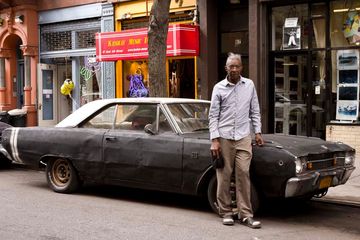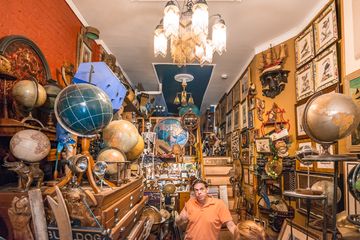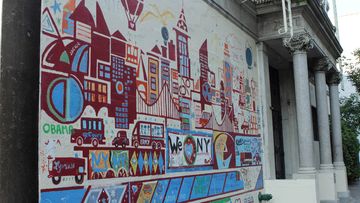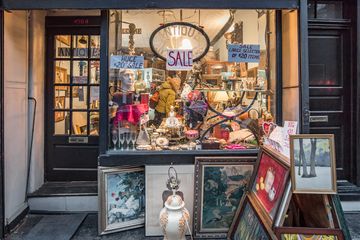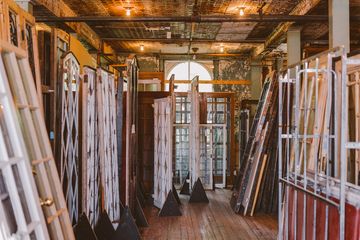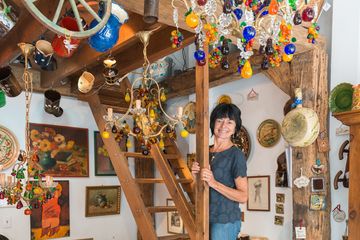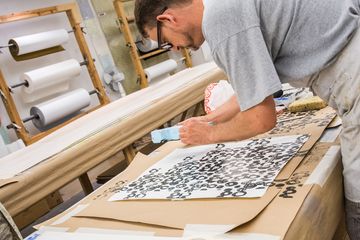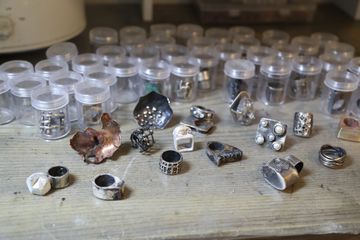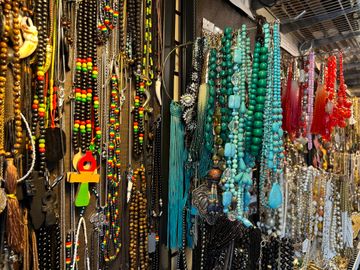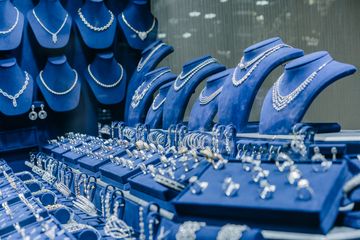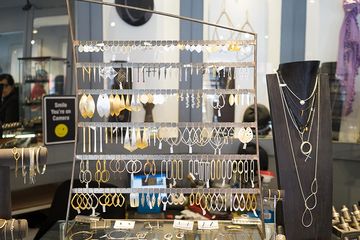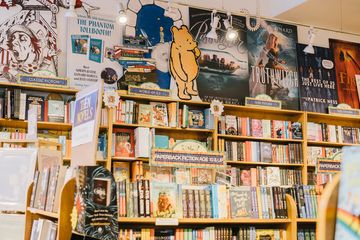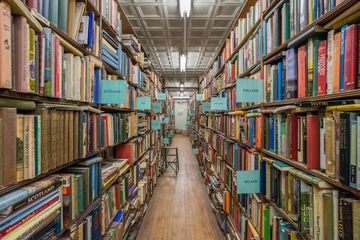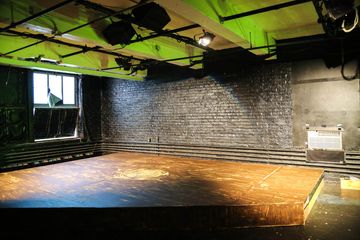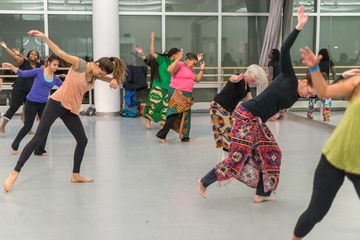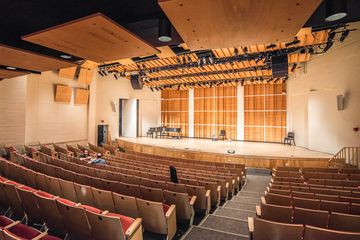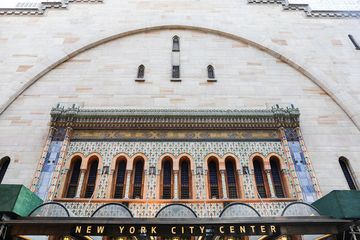With a bowl sitting on the floor labeled “Dog, ” a small children’s table set with books slightly ajar, and a wooden drying rack covered in aprons, walking into Bonnie Slotnick Cookbooks is like entering a well-kept early twentieth century home. Out back is a casual collection of lawn chairs surrounded by greenery, the perfect place to sit and chat or get lost in a good book. We were guests first and customers second, peering at the shelves of authentic cookbooks adorned with spatulas, match boxes, teddy bears, rolling pins, a type-writer, an antique Hope Pride oven, and other trinkets under the domain of kitchen and library. More than a store of antiquarian cookbooks, Bonnie Slotnick offers an experience. The space is active, inviting you to delicately handle the old kitchenware, fumble through the books, and fraternize with Bonnie. The more we spent time with Bonnie, the more we realized how interdependent Bonnie Slotnick Cookbooks and Bonnie Slotnick are, each filling the other, and those around them, with life and breath. Bonnie started collecting books, which she strongly distinguishes from the stocking she does for her store, when she attended Parsons School for Design. After graduating, she began her career in publishing. (She is still a freelance editor to this day, though her customers may not realize it). In 1984, she took on the side job of looking for books to help stock Kitchen Arts and Letters, where scouting out books became as much a mission as a hobby. When Bonnie picks up a used cookbook, she first looks for the aura. She fumbles through the pages, catches the familiar old book smell, and senses the synergy of the words, illustrations, and typefaces: the book as a complete object. She told me that she often feels like she is saying, “Oh there you are old friend, you nice old friend! ” She picked up The American Woman’s Cookbook, first published in 1938, which featured a hologram-like cover, thumb index, and photographs sourced from marketing campaigns. “This is a wartime edition, published in 1942, ” she explained, “…things like sugar, fat, and white flour had to be rationed. ” She went on to show me some of the cooking utensils in her shop – a rotary egg beater, a tomato slicer, and some tools to make butter, amongst others. The Manhattan Sideways team agreed that they were reminiscent of pieces we had in our own homes growing up, a nuanced nostalgia that made our first visit to Bonnie Slotnick Cookbooks both comfortable and familiar. Her passion in showing us the cookware and books not only fueled our own interest, but also engaged others wandering around shop. They could not help but listen to what Bonnie had to say, her eyes smiling the whole way through. Aside from books, what Bonnie wanted to talk about most was her supporting community. Though she at first feared the East Side, viewing it as an entirely different environment than the West, she now is familiar enough with the neighborhood that she could not stop listing other small businesses that she admires nearby, wishing to promote each one of them. Her website even has a section called The Neighborhood, where she promotes other bookstores that she hopes will be as successful as hers has been. These are not her competitors, but her friends. Nothing is more revealing of Bonnie’s character than her immense appreciation for her current landlords. Bonnie has lived on West 10th street since the mid 1970s, and when she lost her lease on her old West Village bookstore location in 2014 after being in business for seventeen years, she was devastated. Luckily, in 2015, Margo and Garth Johnson stepped in, offering her a lease on a commercial space in their house. Book lovers themselves, the two have adopted Bonnie into their community and saved her dream of “keeping bookstores and a love of reading alive. ” They also adopted a dog, which Bonnie admits was as much for her as it was for them. Bonnie’s new lease offers ten years of permanence, rather than the three of her previous one. The new space is also three times the size of the old. With more room, supportive landlords, and a sense of stability, Bonnie is able to diversify the use of her space. She is now open to hosting literary and culinary gatherings, such as book clubs for food literature. She also hopes to expand her stock of books when she accumulates enough funds. The supply is certainly there: potential sellers often send her pictures of books they would like her to buy. Bonnie goes to work six days a week. She says, “Each day I create something. My store is my art. ”
